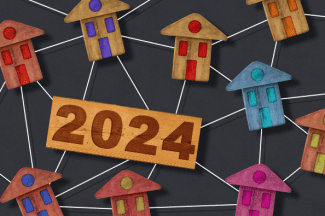3 Trends Driving the Millennial Own vs. Rent Debate

Across all demographics, American home ownership is at 63 percent — the lowest rate in more than five decades. Among millennials, the largest generation since the baby boomers, the rate is only a bit more than half that figure, at 34 percent. Again, it’s a record low.
Naturally, a lull in the economy forces business creation or reinvention to cope with the changing times. As the real-estate landscape and other economic indicators undergo various degrees of digital transformation, businesses must better understand their audience’s pain points and then adjust accordingly. The real-estate industry desperately needs a renaissance if it’s to remain relevant to younger generations.
True, the tech-forward offerings involved with searching for, touring and purchasing a home have evolved. Mobile apps, virtual-reality tours, artificial intelligence and machine learning all are in play. But it’s critically important to understand why these changes are needed to stay competitive.
Tri Nguyen, CEO of direct-mortgage lending firm Network Capital, has emerged as a thought leader in both real estate and millennial audiences. He credits his team — heavily staffed with members of the generation — for his company’s ability to dissect factors that drive success in this age segment. Network Capital then translates that knowledge into a nuanced approach to real estate. The resulting product is highly attractive to younger demographics.
Nguyen pinpoints three big trends affecting home ownership among the millennial market.
1. Gratification.
Delayed gratification long has been considered a viable quality. Forty years of Stanford University research touts it as the most significant precursor to success. In today’s on-demand age, though, the term “delayed” becomes subjective.
Millennials are typified in part by a desire for instant gratification. Prudent or not, their increasing economic sway demands that real-estate industry professionals find ways to adapt. As companies create products to supply this demand, they should incorporate AI and machine learning to expedite the paperwork process, further enhancing the virtual capabilities and superior customer-service strategies in place. “While millennials are looking for quick, easy and virtual options, they want to actually talk with someone throughout the process just like every generation before them,” Nguyen says.
2. Commitment.
Millennials want the option to move, whether it’s from job to job or across countries. Companies have responded, allowing employees to work remotely. This shift contributes to a growing disillusionment with home ownership.
Starting a family is one of the leading catalysts for home ownership. And millennials are getting married later in life, if at all. Only 27 percent of millennials are married, compared to 60 percent of baby boomers when they were the same age.
An Airbnb study revealed millennials are more interested in spending money on experiences than investing in home ownership. Their idea of the American dream isn’t a white picket fence — it’s the freedom to pick up and go at a moment’s notice.
Businesses that facilitate travel through home-sharing demonstrate what it means to cater to consumer demands. So do brands such as Remote Year, which survives entirely on the premise of remote work and travel. Apple, IBM and other major employers are adopting work-from home options that often are more typical of startups or small- to medium-sized businesses looking to decrease overhead. The real-estate industry has yet to master similar accommodations.
3. Income.
The average student-loan borrower owes nearly $40,000. Many millennials have accepted this debt as something they’ll live with forever. The overhanging cloud has a chilling effect on home-ownership rates.
“Millennial homeowners are bogged down by student loan debt, and we’ve seen that create hesitation toward home ownership,” Nguyen says. “But what we want to help them understand is that homeownership paves the way for building equity unlike any other investment. They can afford their dreams without overstretching themselves if they are willing to find homes within their means.”
Recasting home ownership in terms that fulfill millennials’ lifestyle requirements is the first step to shift their perceptions. The industry must immediately change its approach, which until now has been to treat millennials like a more distracted, less financially capable version of the generations that came before them. Millennials are distinct consumers who are looking for a message very different from the one they’re receiving.















 Accessibility
Accessibility